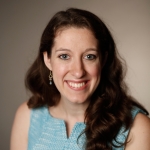In her 2014 book, Neurobiology and the Development of Human Morality: Evolution, Culture, and Wisdom, Darcia Narvaez aims to increase virtuous morality, empathy, and cooperativeness among adults. Anyone interested in understanding the evolutionary, biological, and social bases of morality or seeking to improve ethical behavior can learn a great deal from this book.
Narvaez argues that our sense of morality—or how we function as social beings sharing with one another life’s victories and challenges—is shaped by the integration of our physical, mental, and social experiences as well as our evolutionary history. Modern times have drawn us away from some of our intuitive wisdom about how to create communal societies and led to shrinkage of our moral and emotional capacities. This trend can be reversed, she argues. Both our culture and one’s interpretation of experiences can be altered to increase empathic concern and communal orientations, which will help create societies in which all life (humans and other natural creatures) flourish.
Narvaez begins by reporting about the decline in social interaction, health, and ethical decision making in the U.S. She believes that humans are dynamic, but early exposure to suboptimal learning environments affects our physiology, brain development, and epigenetics. Changes at these levels affect a person’s moral reasoning and ability to act consistently in a virtuous way. Citing Darwin, Narvaez argues that we evolved to be cooperative, connected, moral beings. Only recently have we abandoned the wisdom our small-band hunter gatherer (SBHG) forbearers knew about acting communally. In fact, when people (and even other animal species) are raised in supportive conditions, they tend to cooperate with one another. There are cultural differences in the emphasis placed on competition and cooperation, but cooperation is generally more adaptive.
In our early years, Narvaez asserts, we develop an “empathic core” that impacts both our understanding of ourselves as moral beings and our socio-emotional imaginative abilities. Only with responsive parenting do these systems develop properly such that we have emotional and cognitive understanding of social dynamics. When raised by inattentive parents or in a dangerous environment, our social capacities may underdevelop, and our stress response may become hyperactive. For example, we all have a “safety ethic” that helps us navigate relational stress, but among individuals who experienced early social trauma, the safety ethic may lead people to make decisions based on their own preservation rather than on maximizing group success.
Not only is the influence of early social experiences observable behaviorally, but also we see changes in people’s brains and physiology. Narvaez states that the right hemisphere, more than the left, is associated with emotional and moral processes like affective empathy, interpretation of social relations, emotional modulation, and stress regulation. The frontal lobe as a whole and especially the orbital frontal cortex, which is the primary projection of the emotional limbic system, are also critical. They aid with processing affect, making moral decisions, and imagining moral paths. When these systems are well-formed, they keep us regulated and integrate cognition with the feelings that guide our morality. When these structures are underdeveloped because of early stress or damaged because of injury people may display a lack of compassion, love, and respect as well as signs of sociopathy or other forms of maladaptive social coping.
Narvaez reviews the traditional moral wisdom in Ancient Greek, Abrahamic, Buddhist, and Native American traditions as well as “primal wisdom” from SBHG societies. Primal wisdom can teach us to view the self, and not just society, as communal, expansive and integrative. We are each equal partners with the rest of the world around us. A return to this view of oneness and reciprocity might help arrest some of the moral decline in the western world that framed Narvaez’s investigation of modern human morality. A more holistic moral orientation would help us also to raise wiser children.
Narvaez observes that across religions and cultures the most important virtues are humility, love and authenticity. However, even if an individual is not born into a society or culture that facilitates development of these qualities, that person can (and should) still change herself to have a fuller moral imagination that seeks to facilitate communal thriving and a reverence for nature.
Narváez, D. (2014). Neurobiology and the Development of Human Morality: Evolution, Culture, and Wisdom. New York: W.W. Norton & Company.
 About Rebecca Gotlieb
About Rebecca Gotlieb 
